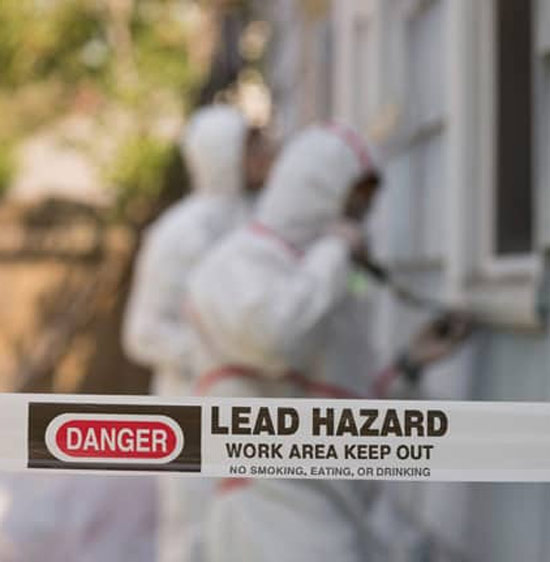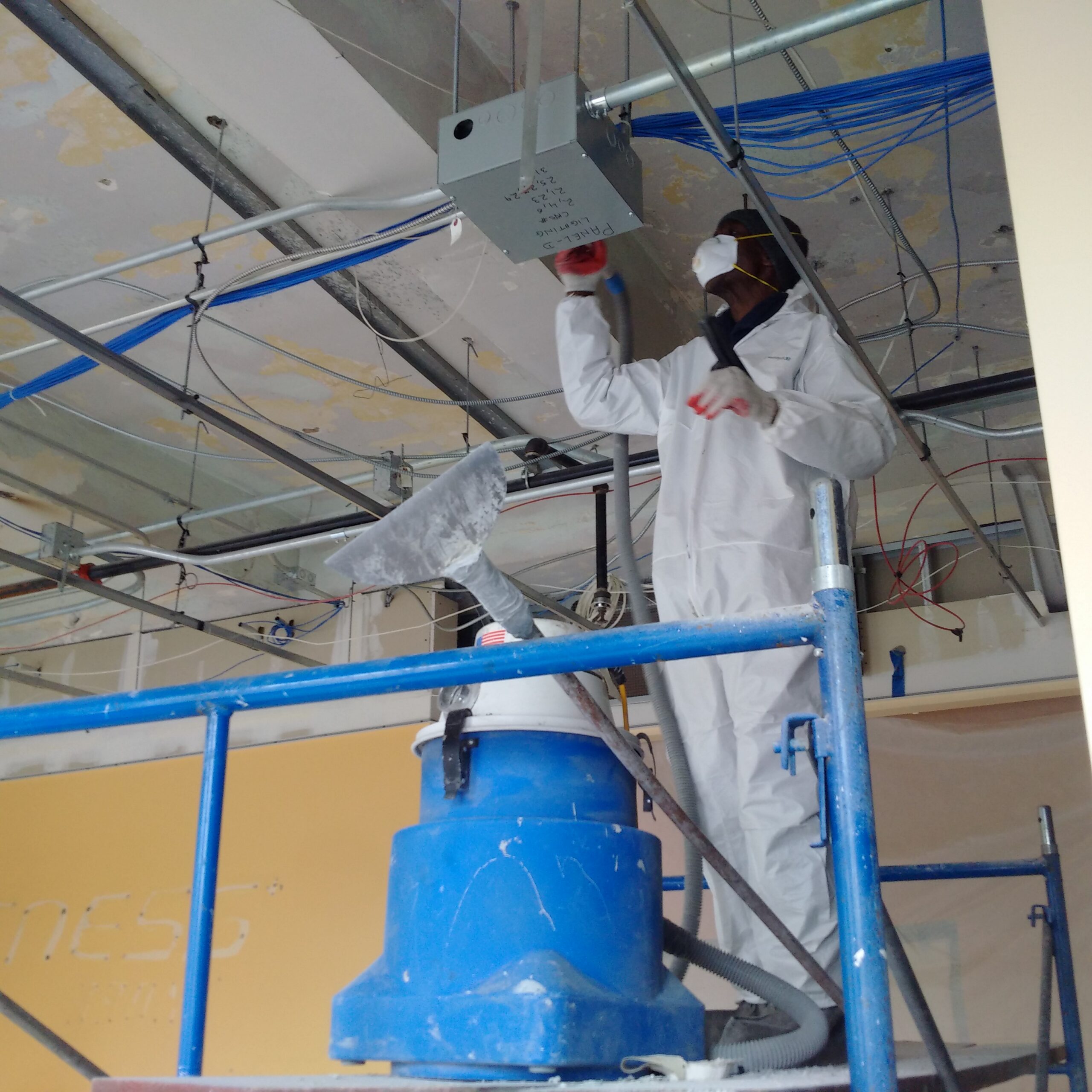Finest Practices for Guaranteeing Safe and Detailed Lead Infraction Reduction
Dealing with lead infraction reduction requires a multi-faceted method to ensure both security and conformity. Preliminary assessments utilizing innovative discovery methods such as XRF analyzers established the phase for a precise understanding of contamination levels. Including correct containment strategies, including closed obstacles and HEPA purification, coupled with using individual safety tools (PPE) for workers, forms the backbone of a safe procedure. Precise clean-up methods, including HEPA vacuuming and wet-wiping, are essential. Yet, it's the final clearance process, including detailed inspections and laboratory testing, that really verifies a lead-free environment, guaranteeing long-lasting security. Just how do these techniques adjoin to ensure detailed lead reduction?

Preliminary Assessment
Performing a preliminary assessment is a critical initial step in lead violation reduction. This phase incorporates an in-depth examination of the residential property to identify the visibility, degree, and specific places of lead-based hazards. Certified professionals, such as qualified lead inspectors or take the chance of assessors, ought to execute a thorough site assessment, utilizing devices like X-ray fluorescence (XRF) analyzers to accurately find and measure lead concentrations in paint, dirt, soil, and water.
The evaluation must also consist of a testimonial of the building's background, previous records, and any issues or health problems reported by owners - Lead Removal Contractors. Documenting the searchings for diligently is necessary, as these records develop the basis for creating an effective abatement method. A comprehensive evaluation additionally involves sampling and lab evaluation, which are crucial to confirm the existence of lead and guide succeeding activities
In addition, it is necessary to communicate the results transparently to all stakeholders, including homeowner, tenants, and regulatory authorities. By guaranteeing that the preliminary analysis is performed with accuracy and roughness, specialists can lay a strong structure for a targeted and reliable lead abatement procedure, ultimately safeguarding public health and guaranteeing compliance with regulatory standards.
Proper Containment
Appropriate containment is crucial to stop the spread of lead pollutants during reduction activities. Effectively taking care of containment minimizes the threat of lead dust and particles migrating to non-work locations, consequently securing both the atmosphere and people outside the immediate job area.

Routine examinations of the containment area are necessary to check for violations or weaknesses in the barrier. Any type of identified issues must be without delay dealt with to maintain the integrity of the control. By sticking to these methods, reduction tasks can efficiently manage lead contamination and reduce affiliated wellness dangers.
Worker Defense
Making certain worker defense is vital throughout lead reduction projects to prevent work-related direct exposure to hazardous lead particles. Important procedures include making use of personal protective devices (PPE) such as respirators, handwear covers, and full-body matches especially visit here made to block lead dirt and fumes. Employees must undergo thorough training on the appropriate use and maintenance of PPE, consisting of in shape screening for respirators to guarantee maximum efficacy.
Engineering controls, such as neighborhood exhaust air flow systems, are important in decreasing air-borne lead focus in the workplace. Management controls need to likewise be link applied, including restricting the duration of exposure and rotating workers to decrease individual direct exposure times. Normal medical surveillance and biological tracking are indispensable for early discovery of lead absorption, allowing timely treatment and therapy.
Furthermore, establishing a decontamination procedure is vital. Workers must follow strict decontamination procedures before breaks and at the end of their shift to avoid lead dirt from being lugged outside the workplace. This includes extensive hand and face washing with lead-specific cleaning representatives and transforming out of infected garments.
Precise Cleanup
Maintaining a secure workplace extends beyond employee security and encompasses thorough cleaning to make sure lead particles are extensively gotten rid of from the site. The process of careful clean-up is crucial in preventing the recontamination of the moderated location linked here and safeguarding both existing and future passengers.
To achieve a thorough clean-up, all work locations must be methodically sanitized. This includes making use of specialized HEPA (High-Efficiency Particulate Air) vacuum and wet-wiping methods to capture and get rid of fine lead dirt that might have decided on surfaces. It is critical to clean up all straight surface areas, consisting of floorings, window sills, and countertops, along with vertical surface areas that may have caught lead fragments.
Workers have to put on suitable individual protective devices (PPE) throughout cleaning to avoid direct exposure to recurring lead dust. Utilized cleansing materials such as wipes, sponges, and mop heads must be dealt with according to contaminated materials disposal guidelines.

Final Clearance
Final clearance is the essential concluding phase of lead abatement that identifies whether the site is risk-free for reoccupation. This vital step includes detailed examination and screening to confirm that all lead dangers have actually been successfully gotten rid of.

Last clearance screening not just safeguards future occupants yet additionally makes sure compliance with local, state, and government guidelines. Furthermore, it works as a recorded validation of the abatement service provider's adherence to industry best practices. Guaranteeing a comprehensive and effective final clearance is essential in guarding public wellness and promoting count on the reduction process.
Conclusion
Guaranteeing risk-free and detailed lead offense reduction necessitates a multifaceted method including preliminary evaluations with sophisticated discovery methods, efficient control methods, rigorous employee defense methods, and thorough cleaning procedures. The final clearance stage, including comprehensive examinations and laboratory testing, is critical to confirm conformity with EPA standards. Adherence to these best methods assures a safe atmosphere for owners, mitigates health and wellness threats, and upholds regulative demands, therefore promoting public health and security in lead-affected locations.
 Jennifer Grey Then & Now!
Jennifer Grey Then & Now! Tia Carrere Then & Now!
Tia Carrere Then & Now! Sydney Simpson Then & Now!
Sydney Simpson Then & Now! Barbi Benton Then & Now!
Barbi Benton Then & Now! Bernadette Peters Then & Now!
Bernadette Peters Then & Now!